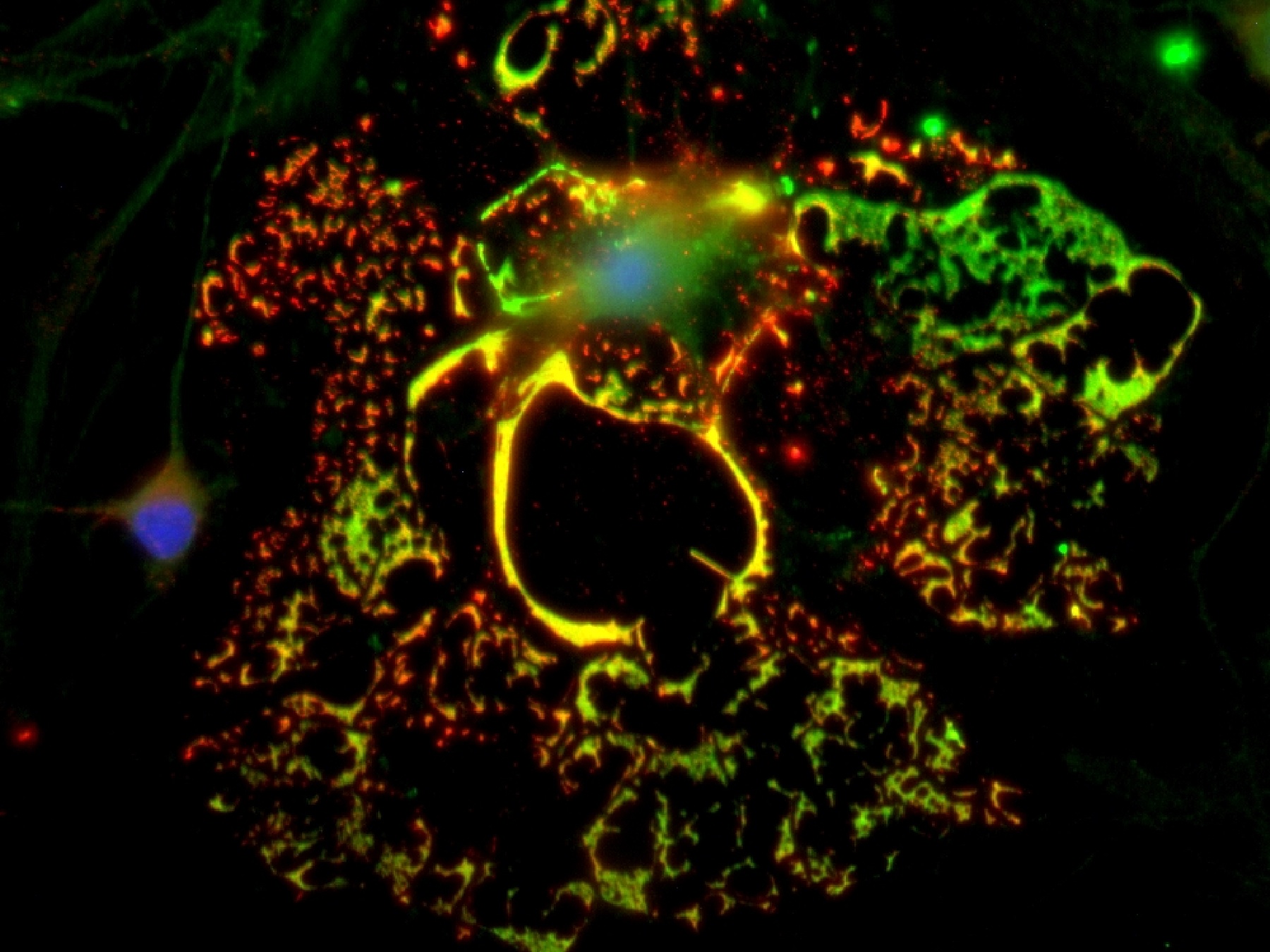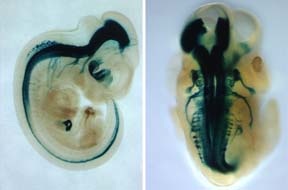Multiple Sclerosis and White Matter Disorders
| Joyce Benjamins, Ph.D | Neurology, Biochemistry, Immunology, Microbiology |
| Paula Dore-Duffy, Ph.D. | Neurology |
| Alexander Gow, Ph.D. | Center for Molecular Medicine and Genetics |
| E. Mark Haacke, Ph.D. | Biomedical Engineering, Radiology |
| Jiani Hu, Ph.D. | Radiology |
| back |
| Joyce Benjamins, Ph.D. Neurology | ||
| Research Interest | Research interests include regulation of myelination, glial differentiation, and the roles of metabotropic glutamate receptors and the kynurenine pathway in mediating oligodendroglial injury. One current project investigates the effects of glutamate receptor agonists and antagonists on disease outcome in EAE, an animal model of multiple sclerosis. A collaboration with Dr. Lisak utilizes gene arrays to investigate the effects of cytokines on gene expression in CNS neurons and glia. | |
| Disease/Disorder | Diseases affecting myelin, including multiple sclerosis, genetic disorders | |
| Species | | |
| Methods | | |
| Key Collaborators | Robert Lisak and John Kamholz | |
| Publications | ||
| Division/Laboratory | ||
| top back | ||
| | Paula Dore-Duffy, Ph.D. Neurology | |
| Research Interest | The role of the microvascular pericyte in vascular function and CNS vascular diseases. The pericyte is an integral member of the blood brain barrier and neurovascular unit. As such it functions as a regulator cell and is involved in regulation of focal capillary blood flow, angiogenesis, inflammation and is now known to be a source of adult stem cells. Ongoing studies include investigation of pericytes in stem cell therapeutic paradigms in EAE and Traumatic brain injury. | |
| Disease/Disorder | Multiple sclerosis, traumatic brain injury and stroke | |
| Species | Rats and mice. | |
| Methods | Immune based techniques, cell culture, molecular biology, protein chemistry, FACs analysis, imaging and translational research. | |
| Key Collaborators | Alexander Gow, Jose Rafols, Christian Kreipke, William Brusilow and Richard Needleman, and outside the University Joseph Lamanna and Robert Miller at Case Western Reserve School of Medicine in Cleveland and Richard Milner at Scripps Research Institute and Gregory del Zoppo at the University of Washington in Seattle. | |
| Publications | ||
| Division/Laboratory | ||
| top back | ||
| Alexander Gow, Ph.D. Center for Molecular Medicine and Genetics, Pediatrics, Neurology | ||
| Research Interest | White matter disease and relevance to cognitive deficits. | |
| Disease/Disorder | Depression, multiple sclerosis, Pelizaeus-Merzbacher, Auditory Processing Disorder. | |
| Species | Mouse and Human | |
| Methods | Knockout and transgenic mice, confocal and electron microscopy, psychoacoustics, behavior, MRI ad MRS, biochemistry, microarrays, computational modeling, drug testing to ameliorate neurodegeneration. | |
| Key Collaborators | Robert Skoff, Anatomy and Cell Biology (WSU); Zhengqing Hu, Otolaryngology (WSU); Paula Dore-Duffy, Neurology (WSU); Jeff Stanley, Psychiatry (WSU); Shane Perrine, Psychiatry (WSU); Matthew Galloway, Psychiatry (WSU); Mark Cheng, Electrical Engineering (WSU) | |
| Publications | ||
| Division/Laboratory | ||
| top back | ||
| E. Mark Haacke, Ph.D. Biomedical Engineering, Radiology | ||
| Research Interest | We are interesting in a wide variety of neuroimaging applications related to neurovascular diseases from multiple sclerosis to dementia. | |
| Disease/Disorder | Stroke, trauma, cancer, multiple sclerosis and aging. | |
| Species | Human, rats and mice. | |
| Methods | MRI | |
| Key Collaborators | Jiani Hu, Norman Cheng, Zhifeng Kou, Albert King, Randy Benson and James Garbern | |
| Publications | ||
| Division/Laboratory | ||
| top back | ||
| | Jiani Hu, Ph.D. Radiology | |
| Research Interest | Exploring in vivo MR properties of lesions for diagnosis, prognosis and treatment follow-up using the state-of-art in vivo magnetic resonance imaging (MRI) and spectroscopy (MRS) techniques. | |
| Disease/Disorder | Neurological disorders and cancers. | |
| Species | Human and small animals. | |
| Methods | MRI and MRS. | |
| Key Collaborators | Mark Haacke | |
| Publications | ||
| Division/Laboratory | ||
| top back | ||


